In the Democratic Republic of Congo, artisanal mining is a remnant of the once-booming gem industry.
TEMBO, Democratic Republic of Congo—
As the truncated rat cooks in the fire, its body slowly roasting over the smoldering logs, 30-odd diggers stand around in the sweltering midday sun. Some break boulders at the bottom of a 50-foot pit in a dry riverbed, trying to access the gravel beneath, which they hope holds hidden wealth. Others watch, talk or take shelter from the heat.
A mile upstream, the divers try their luck. In ragged, re-stitched wetsuits, young men resurface every few minutes, heaving sacks of earth from the riverbed into the hands of helpers on a patchwork flotilla of multicolored dinghies. The boats are as close to the Angolan side of the river as can be, tethered to Congo by 50-foot ropes and pale hosepipes that pump air to the divers.
These miners are the remnants of the Democratic Republic of Congo’s diamond industry, which once provided a quarter of the world’s supply. In 2015, Congo exported 17.1 million carats of the gems, down from 33 million carats 10 years earlier. Across the country, as global diamond prices have dropped and other commodities like copper, cobalt, coltan, and gold have become more profitable, diamonds have been left to the diggers, divers, and dealers in forgotten corners of Congo trying to strike it rich, or at least eke out a living, in remote mines.
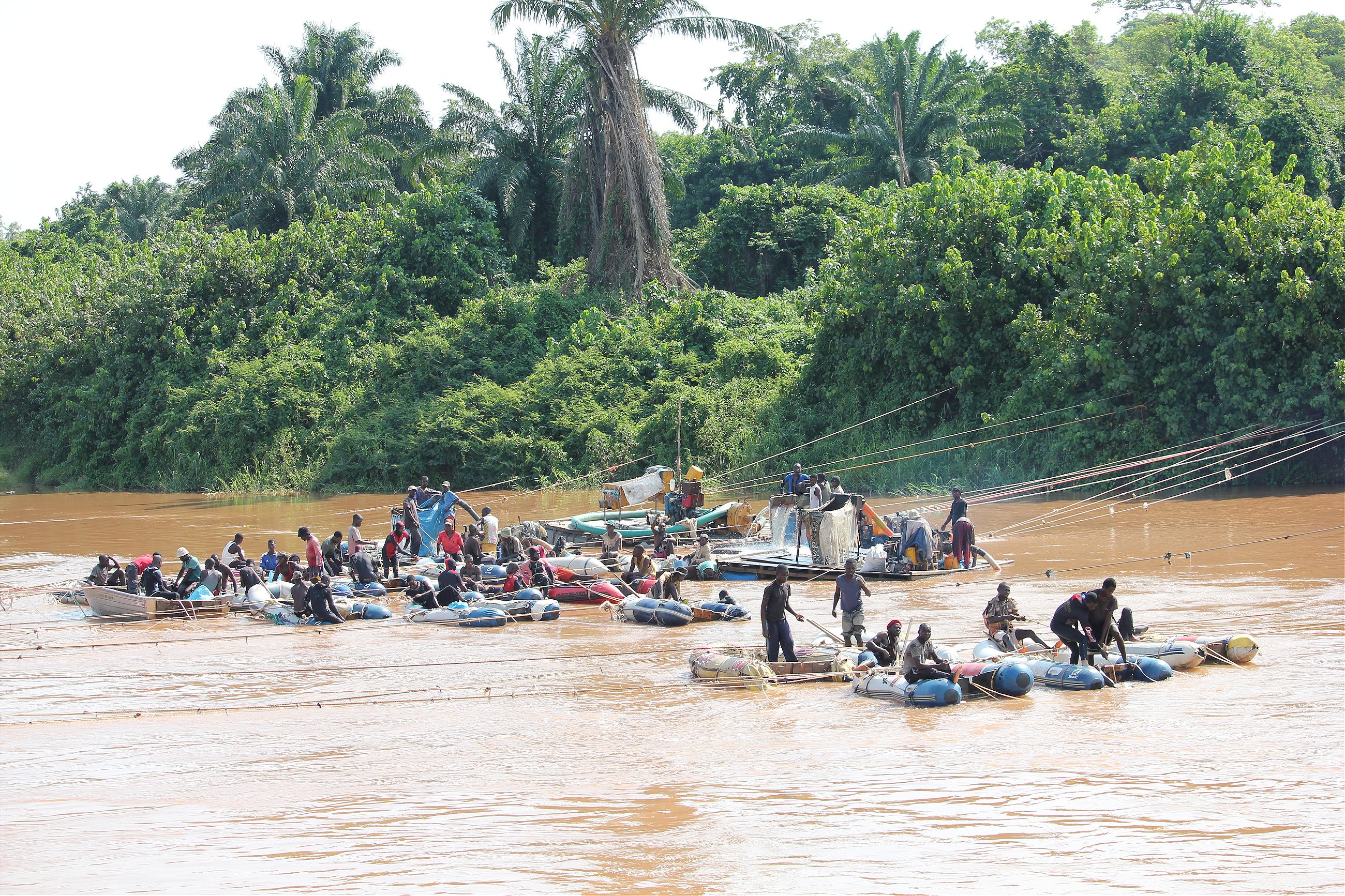
This mine is at the edge of the world as far as the local population is concerned. No car or truck has reached the village of Mawangu, perched on a bluff 500 feet above the diamond pits, since 2012.
A single airfreight company organizes a 90-minute flight from Congo’s chaotic capital, Kinshasa, a few times a month to Tembo, 30 miles further downstream on the River Kwango. From there, an hour on a motorbike along a narrow, sandy, single-track road, past a police roadblock, through dense forest and open savannah, and across a creaking, crumbling bridge, brings you to Mawangu. Everything comes in and out on two wheels or two feet.
The villages on the way have names but little else: Mkialangu, Vunda, Kakondo, Ngombwia-Tuba, Kasanzi. Yet the diggers and divers still come, drawn by the lure of the perfect stone.
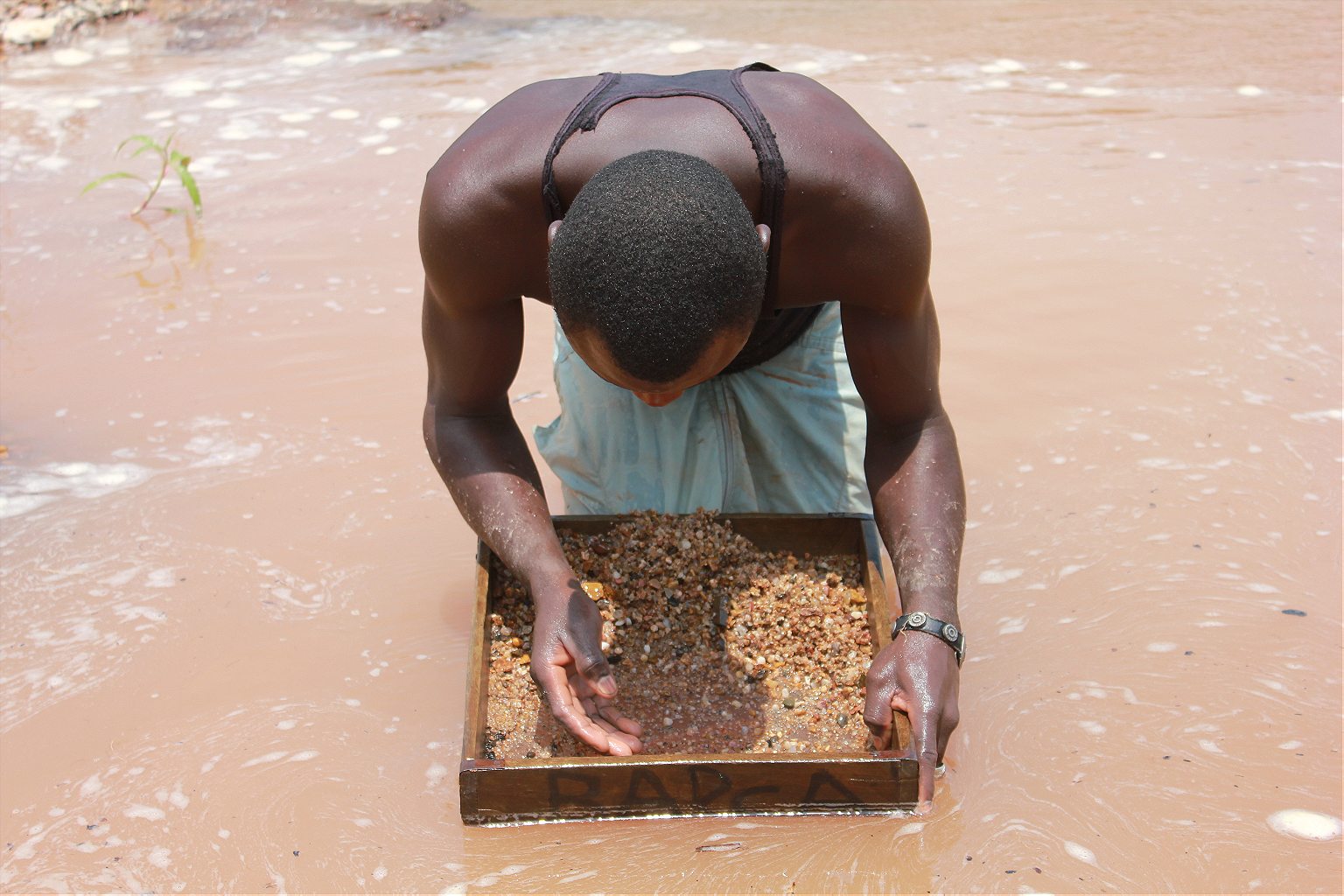
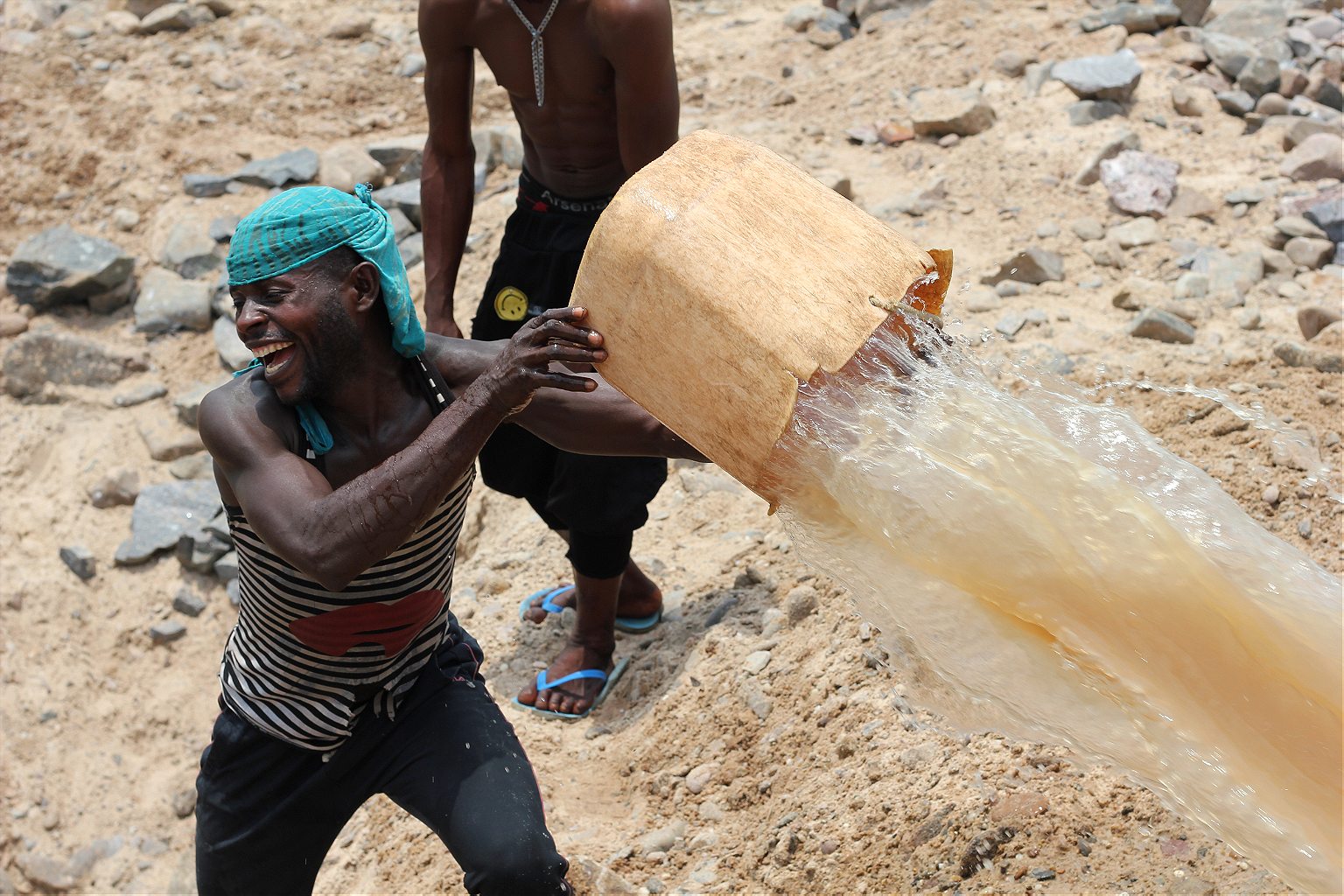
Chief Adrien-Bita Shikita has long, elegant limbs and a relaxed confidence that comes from years as the most important man in the room. He wears a yellow T-shirt, a relic from a recent vaccination campaign, black tracksuit pants, and plastic sandals. A digital Casio watch clings to his slender left wrist.
In his small, cool sitting room, he laments about diamonds, development, and broken promises over a lunch of onion, fried eggs, and bread prepared by his third wife and the mother of five of his children.
“Authorities have come and asked what we need, but not delivered anything,” he says. “The geologists tell us that the majority of the diamonds on the Kwango River are on the Congolese side. Mining companies have come but nobody has invested in the village.”
A small international outfit, Midamines, set up a dredging operation in 2004 but pulled out in 2014 following an acrimonious dispute between its Belgian and American owners. They were supposed to build a school, a health center, and repair the bridge that connects Mawangu to Tembo. They never did it, Shikita says.
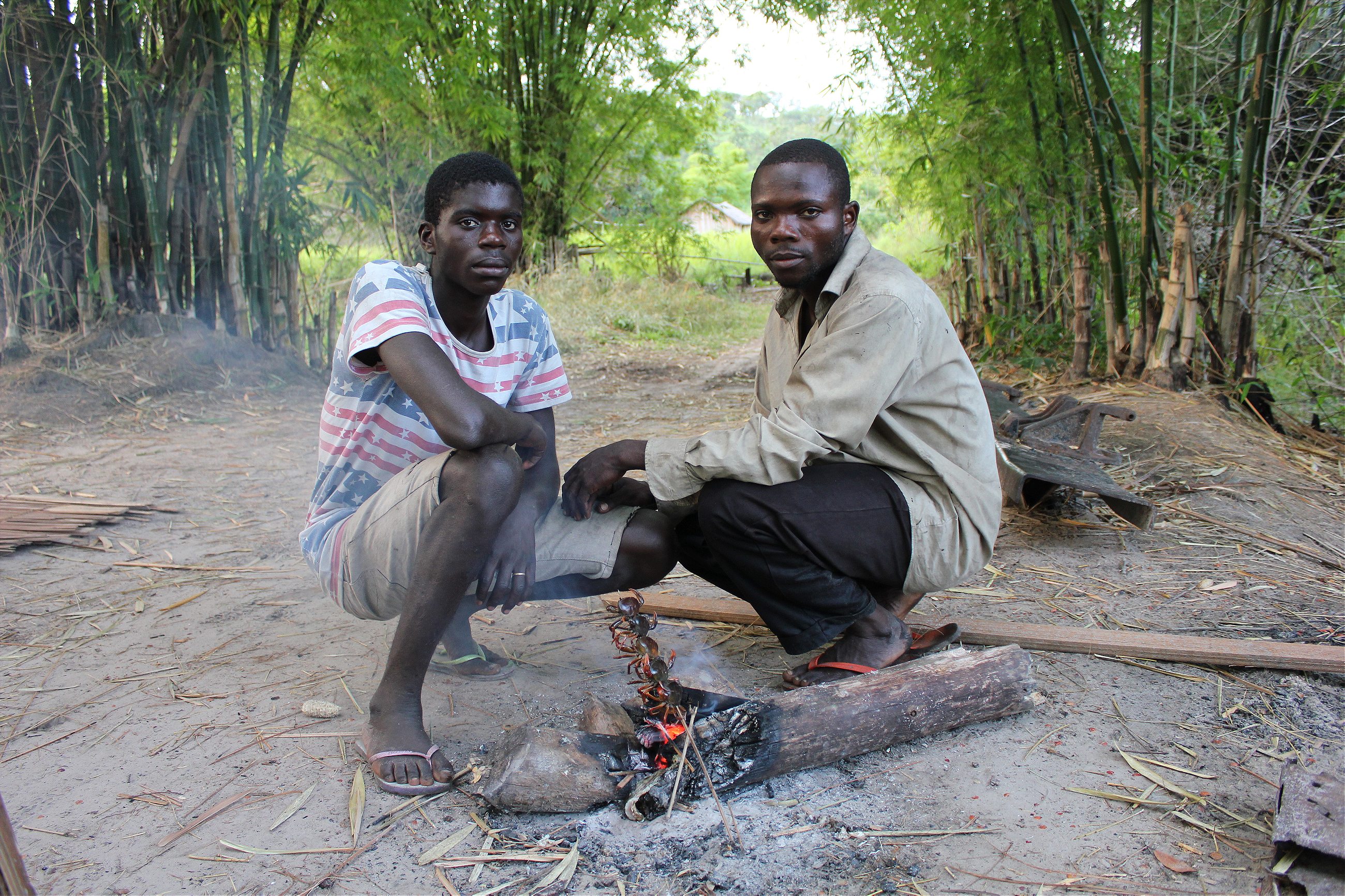
In its heyday in the 1980s and 1990s, millions of dollars of stones passed through Tembo every week. Some were mined at Mawangu, and the rest were smuggled across the Kwango River from northern Angola at the height of that country’s civil war. During the Cold War, the U.S.-backed Congolese dictator Mobutu Sese Soko as well as Angolan rebel leader Jonas Savimbi, who was fighting the Soviet-backed People’s Movement for the Liberation of Angola (MPLA) for control of the Angolan capital, Luanda. The two leaders struck up an unlikely partnership and between 1992 and 1998 alone, it is estimated that Savimbi’s National Union for the Total Independence of Angola (UNITA) sold as much as $3.72 billion worth of diamonds to fund its war effort, many of which passed through Congo.
Dozens of daily flights shuttled stones and buyers to and from the Congolese capital and Tembo, the trading post for Angolan diamonds, boomed. This newfound wealth ended, however, when Savimbi was killed in February 2002, ending the country’s civil war just two months later. The MPLA slowly retook control of the country and its borders and clamped down on illegal exports. Illegal trade continued and some stones still get through, but nothing like the previous volume.
On the sleepy, rutted dirt airstrip, the shell of a rusting Soviet fighter jet, downed in 1991, is the only sign of Tembo’s former geopolitical and economic significance. More than 10,000 people still live in the sprawling town, but there are no roads, no electricity mains, and no opportunities. For those that cannot afford the infrequent flights, the easiest way to reach Kinshasa is a two-week boat trip down the Kwango to the nearest tarmacked road. There is a hospital, but it is badly undersupplied.
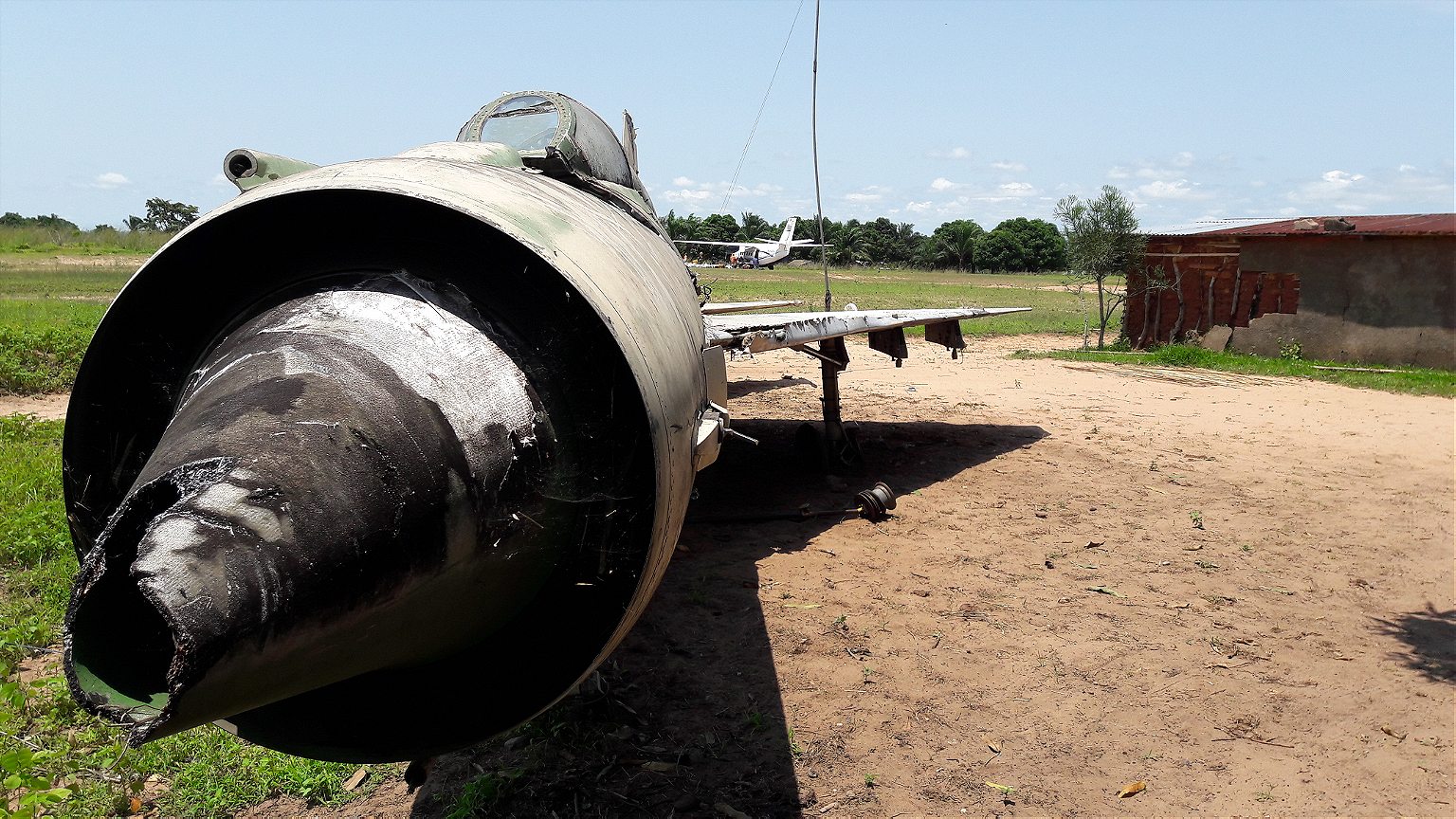
Still, young men continue to arrive to seek their fortune in the riverbed, with only the smallest handful making it rich.
A Lebanese diamond trader in Tembo bought a 24-carat stone in October from divers at Mawangu, says Jeancy Kaloso, 27, a hopeful young Congolese dealer looking to follow in his footsteps. “That is what we are all searching for.”
His Samsung television and surround-sound system powered by a gas generator blasts out Trace Africa, a pan-African cable channel that streams African hip-hop and dance music. In his matching gray shorts and T-shirt made by Hood By Air, the uber-trendy New York designer, he could be sitting in any U.S. city.
“I have never trained properly; just learned the theory,” he says, explaining that he can buy as much as $10,000 of stones a month. “We have the production. The problem is the lack of materials to support exploitation. If there is someone with means, he can support production and help a lot of people.”
He wants to find a stone he can sell for over $1 million; then he’ll set up a bigger operation. “To have large stones it is very difficult, you need a lot of patience,” he says. “But I can do that. I will wait.”

Five hundred miles away in Kinshasa, at the headquarters of the government agency that oversees gem exports, known as CEEC, two flights of stairs and three hulking gray steel doors lead to a first-floor sorting room where Chinese sellers are auctioning diamonds to a collection of Congolese and foreign buyers. Under security cameras and strong halogen lights, the experts scatter the stones on sorting tables. Individual gems are picked up with tweezers, examined under magnifying glasses, and put to one side. Parcels are then wrapped and weighed, and certificates are drawn up describing the total carats and value of each package.
Under the 2003 multinational Kimberley Process Certification Scheme meant to stop diamond sales—like those from UNITA—from funding conflict, every shipment of rough diamonds crossing an international border should be transported in a tamper-resistant container and accompanied by a government-validated Kimberley Process Certificate. While Congo is a member of the scheme, officials admit that fraud is still common and that it is easy for big stones from informal mines, like those at Tembo and Mawangu, to find their way out of the country illegally.
Today, the diamonds have come from Société Anhui Congo d’Investissement Minier (SACIM), a joint venture between China’s Anhui Foreign Economic Construction Group and the Congolese state, which last year was responsible for about 85 percent of the industrial diamond output in the country. SACIM shipped 684,870 industrially mined carats in the third quarter of 2016; official artisanal production was 3.5 million carats in the same period, four times greater than total industrial output. In his cool, spacious office next door, the head of Congo’s CEEC, Alexis Mikandji, concedes there is a problem.
A former cabinet director at the country’s Ministry of Mines, Mikandji is immaculately dressed and has a relaxed manner. “17 million carats”—the country’s 2015 output—“does not represent our potential,” he says, as a French news channel flickers on the television behind him. Too many diamond concessionaires have failed to invest in the exploration activities required by their mining licenses, which would lead to new mines, infrastructure, and jobs, he explains. They prefer instead to allow informal digging to occur illegally on the concession area and then extract revenue from the sales. “Since 2004, only three or four industrial mining license holders have delivered on their commitments,” he says.
The government now wants to force those companies sitting on industrial permits to invest or return the licenses so they can be re-tendered. “They’re sitting on the permits and it is blocking development,” he says of these companies. But reclaiming the licenses—many of which are owned directly or indirectly by powerful members of Congo’s political elite who saw diamond sales as a quick and easy way to make foreign currency at the end the country’s civil war—will be difficult.
From the Kwango Bridge to River Tungila is for the presidency
Mikandji declined to comment on the identity of the license-holder in Tembo, but for the diggers and dealers there is no doubt as to who controls the river.
“From the Kwango Bridge to River Tungila is for the presidency,” diamond trader Jauvin Manzanza explains, referring to a 450-mile stretch of the Angolan border that runs along the Kwango River through Tembo and Mawangu.
Records held by the mining registry in Kinshasa confirm that two companies owned by members of the president’s family, the Kabilas, control 96 diamond permits, half of which cover hundreds of miles of the frontier.
Kabila-owned companies first arrived in Tembo with machinery to dig for diamonds in 1998, months after Joseph Kabila’s father, Laurent-Désiré, seized power from the ailing Mobutu Sese Seko, Manzanza says. That equipment now rusts in the tropical heat. In 2007, the family tried to cut an exploration deal with a Toronto-listed diamond company then known as BRC Diamond Core, but again, the efforts collapsed. Ten years later, the companies still hold the licenses but have made no effort to invest, thereby blocking development, according to Mike de Witt, who led the negotiations for BRC Diamond Core at the time.
“There’s nothing happening, it’s just stagnating,” he said from Botswana, where he’s working on a new project. “They still have these licenses under force majeure, so how can anybody else go in there and do some proper exploration?”
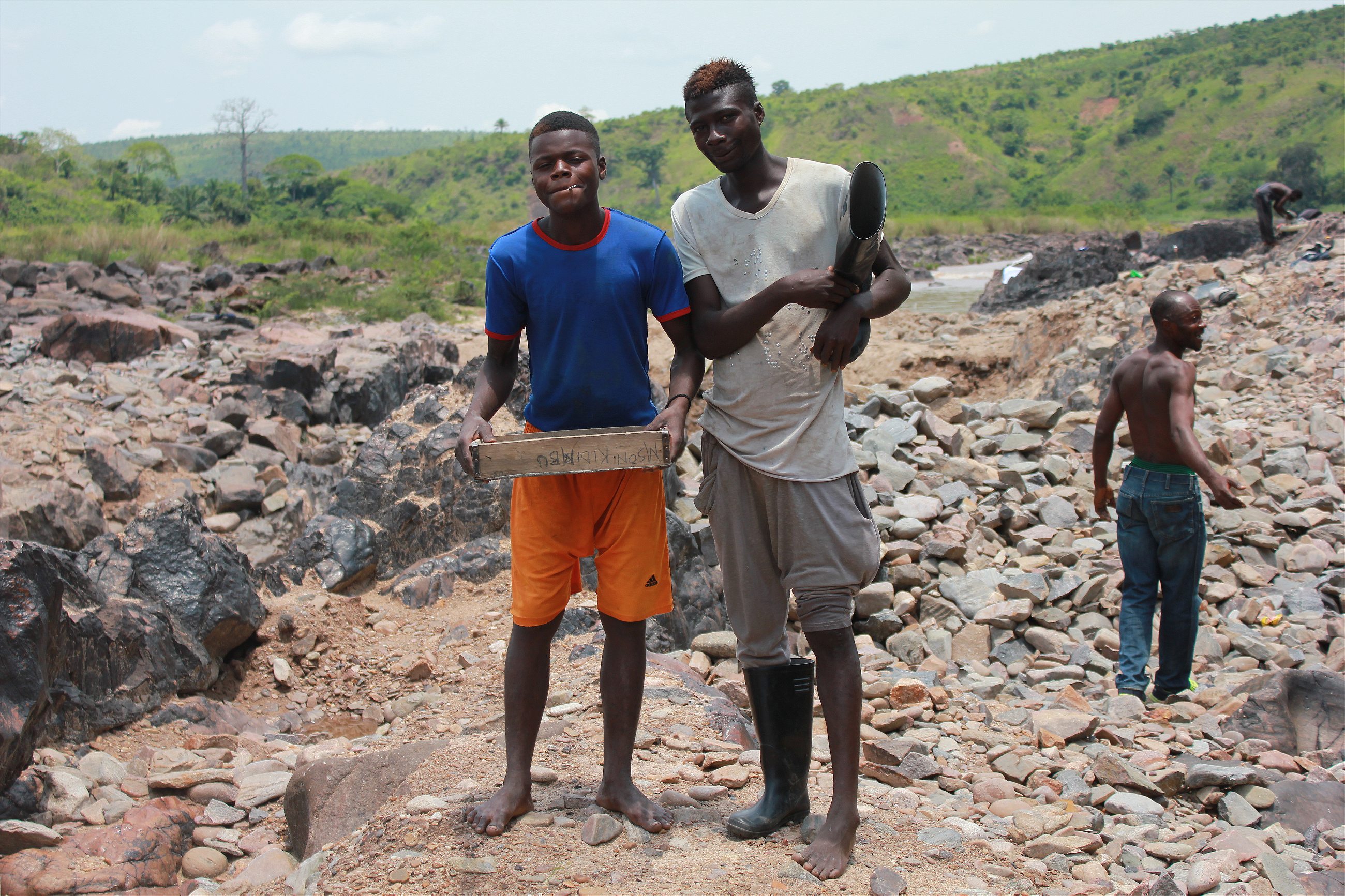
The presidential family’s ties with the area, however, are not completed severed.
“We stopped working the concession but we still control it,” says Maj. Freddy Kakudji, commander of the small group of presidential soldiers left behind to patrol the river. Originally from the president’s Katanga region on the other side of the country, Kakudji is part of an elite group of soldiers that officially guard the president and his residence but in reality do much more.
He’s wearing his Sunday best: a navy blue, polka-dot, short-sleeve shirt, white linen trousers with a thin blue stripe, and leather sandals with brass buckles. A golden heart necklace hangs from his neck, the letter F engraved in the center.
It’s a hot Sunday afternoon, and a constant flow of people come to see him as he relaxes at the back of a dilapidated shack. He’s converting it into a bistro, he says. As one of the few figures of authority in this forgotten corner of the country, he’s an important player in local politics.
“It is a presidential property,” he says of the river, from which his soldiers collect an informal tax from every sack of gravel mined. “I manage it for the president because I am a Congolese patriot.”
We are working in their project illegally, so they have the right to take something
Three miles outside of Tembo on another section of the river, a group of diggers funded by Kaloso, the 27-year-old trader, have blocked off a section of the riverbed and excavated pits using diesel-powered pumps to extract the remaining water.
The 50 or so diggers, who hail from all corners of the country, work in teams of as many as a dozen per pit and split the profits. “In a mine site you find people from all over,” confirms Odon Skihitel, 34, a father of six.
The men break larger boulders by hand, then shift the rocks out of the pit and continue digging to reveal the gravel beneath.
When Kakudji’s men arrive, the diggers offer each a few bags of gravel, which the soldiers sift through, looking for diamonds. “We are working in their project illegally, so they have the right to take something,” Skihitel explains.
Times have been hard in the last few months, Skihitel says, with no big finds and each team only making about $100 a week after food and diesel costs have been deducted by Kaloso. But in an area as isolated as Tembo, there are few other options. With no road to Kinshasa, all of the town’s manufactured goods come across the river from Angola, and there is no wider market for locally produced goods apart from diamonds.
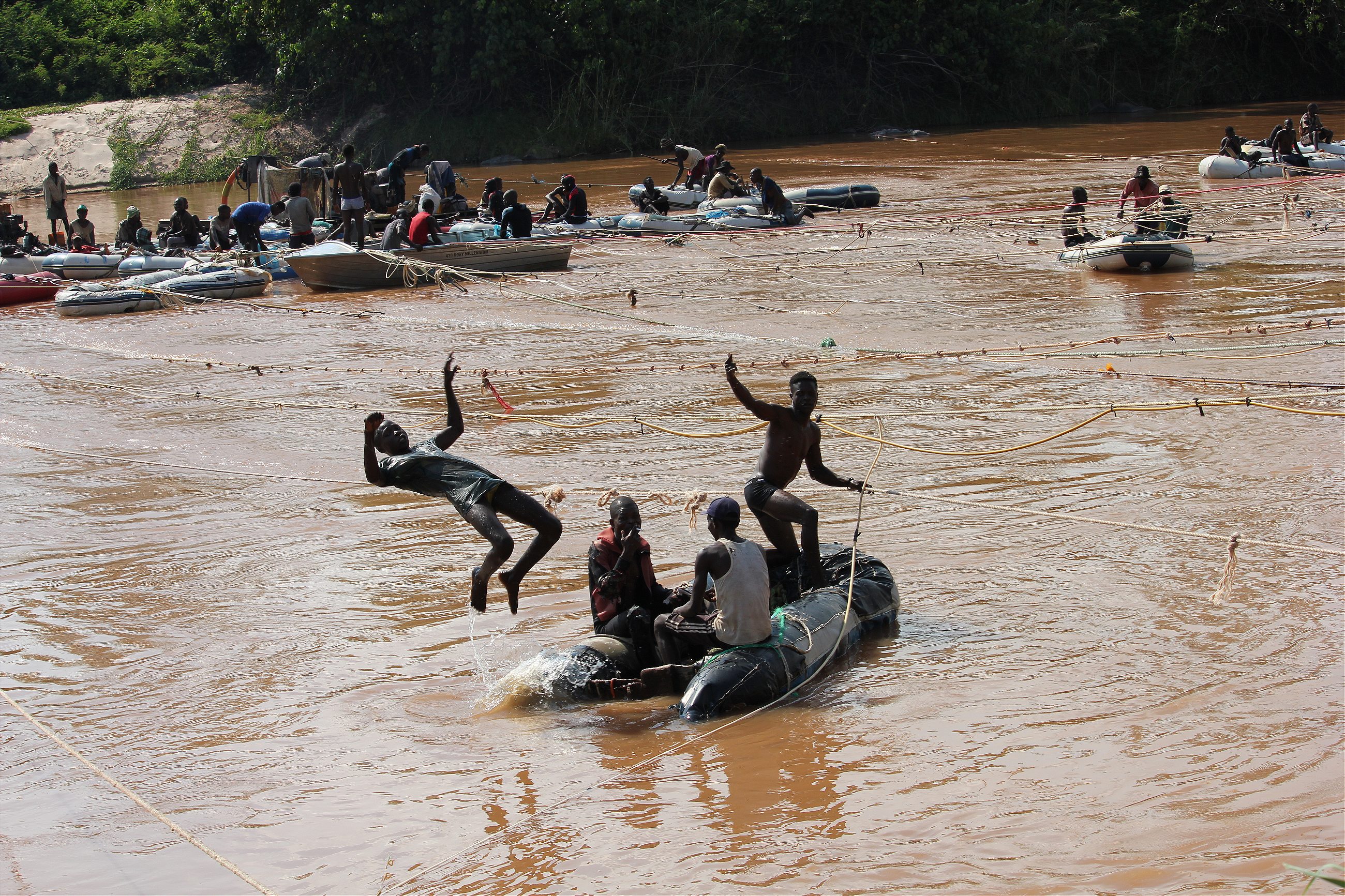
The better-funded divers are having more luck at Mawangu, where some 30 small shops have sprung up on the banks of the river to sell food, soda, and cigarettes, as well as to buy diamonds and provide shade for those who need to rest. At the end of the rickety parade, a small sign offers “massages.”
The colony of boats shifts position up and down the river like a single machine. Two ripped, patchwork wetsuits, many times repaired, hang to dry on one of the tethers. Every few minutes, a diver resurfaces and the teams of three on each boat help haul in a sack from the riverbed. The sun goes down, but the generators continue to hum, pumping air to the intrepid divers.
Kometa Kongol, a buyer, reads his Bible as he waits for divers to bring him stones. “No diamonds today,” he says. “But they will come.”
